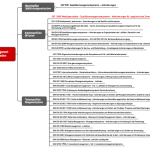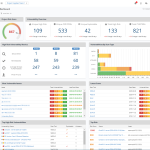Boost Your Software With Top-rated Bug Ratings: Unleash The Power Of Software Bug Ratings!
Software Bug Ratings: A Comprehensive Guide
Introduction
Dear Readers,
Welcome to our comprehensive guide on software bug ratings. In today’s digital age, where software plays an integral role in our daily lives, the presence of bugs can be detrimental. Software bug ratings help developers and users understand the severity and impact of these bugs, enabling effective bug tracking and resolution.
2 Picture Gallery: Boost Your Software With Top-rated Bug Ratings: Unleash The Power Of Software Bug Ratings!


In this article, we will delve into the world of software bug ratings, exploring their importance, how they work, and their advantages and disadvantages. By the end, you will have a thorough understanding of this essential aspect of software development. So, let’s dive in!
What are Software Bug Ratings?
🔍 Software bug ratings refer to a system of categorizing bugs based on their severity and impact on software functionality. They help developers prioritize bug fixes, ensuring that critical bugs are addressed promptly. Bug ratings are typically assigned during the testing and debugging phase of software development and are used to track and manage the resolution process.
🔍 The severity of a bug is often measured based on its potential impact on the software’s performance, security, or user experience. Bug ratings provide a standardized way to communicate the urgency and importance of fixing a bug, facilitating effective collaboration between developers, testers, and stakeholders.
Who Assigns Software Bug Ratings?

Image Source: clickup.com
🔍 Software bug ratings are typically assigned by quality assurance (QA) teams, testers, or developers. These individuals assess the impact and severity of bugs based on predefined criteria and industry best practices. The bug rating system may vary between organizations, but it usually follows a similar framework.
🔍 It is crucial for the assigned personnel to have a deep understanding of the software’s functionality, its intended users, and the potential consequences of different types of bugs. By leveraging their expertise, they can accurately assess the severity of each bug and assign an appropriate rating.
When are Software Bug Ratings Assigned?
🔍 Software bug ratings are typically assigned during the testing phase of software development. As testers identify and report bugs, they simultaneously evaluate their severity and impact. The bug rating helps prioritize the bug-fixing process. However, bug ratings can also be assigned after the software is released if critical bugs are discovered by users or through automated error reporting systems.
🔍 It’s important to note that bug ratings are not static. As the development process progresses and more information becomes available, the severity and impact of bugs may change. Therefore, regular reassessment of bug ratings is essential to ensure that the most critical issues are addressed promptly.
Where are Software Bug Ratings Used?
🔍 Software bug ratings are utilized in various stages of software development, including testing, debugging, and maintenance. They serve as a communication tool between different stakeholders, such as developers, testers, project managers, and clients.

Image Source: professionalqa.com
🔍 Bug ratings provide a common language for discussing and prioritizing bug fixes. They help developers allocate resources efficiently, focusing on the most critical issues first. Additionally, bug ratings assist project managers in making informed decisions about software release dates and managing client expectations.
Why are Software Bug Ratings Important?
🔍 Software bug ratings play a vital role in ensuring the quality and reliability of software products. By categorizing bugs based on their severity and impact, developers can prioritize their efforts and address critical issues promptly. This leads to improved software performance, enhanced user experience, and increased customer satisfaction.
🔍 Furthermore, bug ratings contribute to efficient resource allocation. Developers can allocate their time and efforts more effectively by focusing on high-priority bugs first. This helps streamline the bug-fixing process and reduces the overall development time, resulting in cost savings for organizations.
How are Software Bug Ratings Assigned?
🔍 Software bug ratings are typically assigned based on predefined criteria and guidelines. These criteria may include factors such as the impact on functionality, security implications, frequency of occurrence, and ease of replication. Each organization may have its own rating scale, ranging from low to high or using numerical values.
🔍 The assigned personnel assess each reported bug individually, considering its impact on the software’s performance and user experience. They may also take into account the potential risks associated with the bug, such as data loss or security breaches. Based on this evaluation, a bug rating is assigned to prioritize its resolution.
Advantages and Disadvantages of Software Bug Ratings
🚀 Advantages:
1️⃣ Improved Bug Prioritization: Bug ratings enable developers to prioritize their efforts, ensuring that critical bugs are resolved quickly, thereby improving software performance and user satisfaction.
2️⃣ Streamlined Development Process: By focusing on high-priority bugs, developers can allocate their time and resources more efficiently, reducing the overall development time and costs.
3️⃣ Effective Communication: Bug ratings provide a common language for discussing and addressing bugs among different stakeholders, facilitating collaboration and decision-making.
⚠️ Disadvantages:
1️⃣ Subjectivity: Assigning bug ratings involves a certain level of subjectivity, as different individuals may interpret the severity and impact of bugs differently.
2️⃣ Potential Misclassification: In some cases, bugs may be misclassified or assigned incorrect ratings, leading to delays in resolving critical issues or allocating resources inefficiently.
3️⃣ Lack of Standardization: Bug rating systems may vary between organizations, making it challenging to compare and prioritize bugs across different software projects.
Frequently Asked Questions (FAQ)
1. What if a bug’s severity changes over time?
Answer: Bug ratings are not static and can be updated as new information becomes available. Regular reassessment ensures that bugs are addressed based on their current severity.
2. Are bug ratings consistent across different software projects?
Answer: Bug rating systems may vary between organizations and projects, making it essential to familiarize oneself with the specific rating criteria and scale used.
3. How can bug ratings help project managers?
Answer: Bug ratings assist project managers in making informed decisions about software release dates, resource allocation, and managing client expectations.
4. Can users contribute to bug ratings?
Answer: In some cases, users can provide feedback on bug severity, helping developers prioritize bug fixes based on real-world usage.
5. How should organizations handle low-priority bugs?
Answer: While low-priority bugs may not require immediate attention, organizations should still track and address them to ensure a high-quality software product.
Conclusion
In conclusion, software bug ratings are a crucial aspect of software development, enabling effective bug tracking and resolution. By assigning ratings based on severity and impact, developers can prioritize their efforts, resulting in improved software performance and user experience. While bug ratings have their advantages and disadvantages, their benefits in terms of bug prioritization and efficient resource allocation cannot be overlooked.
We hope this comprehensive guide has provided you with valuable insights into software bug ratings. Now, armed with this knowledge, you can navigate the world of software development with greater confidence and ensure the delivery of high-quality software products.
Final Remarks
Dear Readers,
Thank you for taking the time to read our comprehensive guide on software bug ratings. We understand the importance of bug-free software in today’s digital landscape, and we hope this article has empowered you to improve your software development processes.
However, it’s essential to note that while bug ratings are a valuable tool, they should not be the sole focus of your quality assurance efforts. Regular testing, thorough code reviews, and a proactive approach to bug prevention are equally important in delivering reliable software products.
Remember, software development is an iterative process, and bugs are an inevitable part of it. Embrace them as opportunities for improvement and growth, and always strive to deliver the best possible user experience.
Thank you once again for being our valued readers. We wish you success in your software development endeavors!
This post topic: Software Reviews


